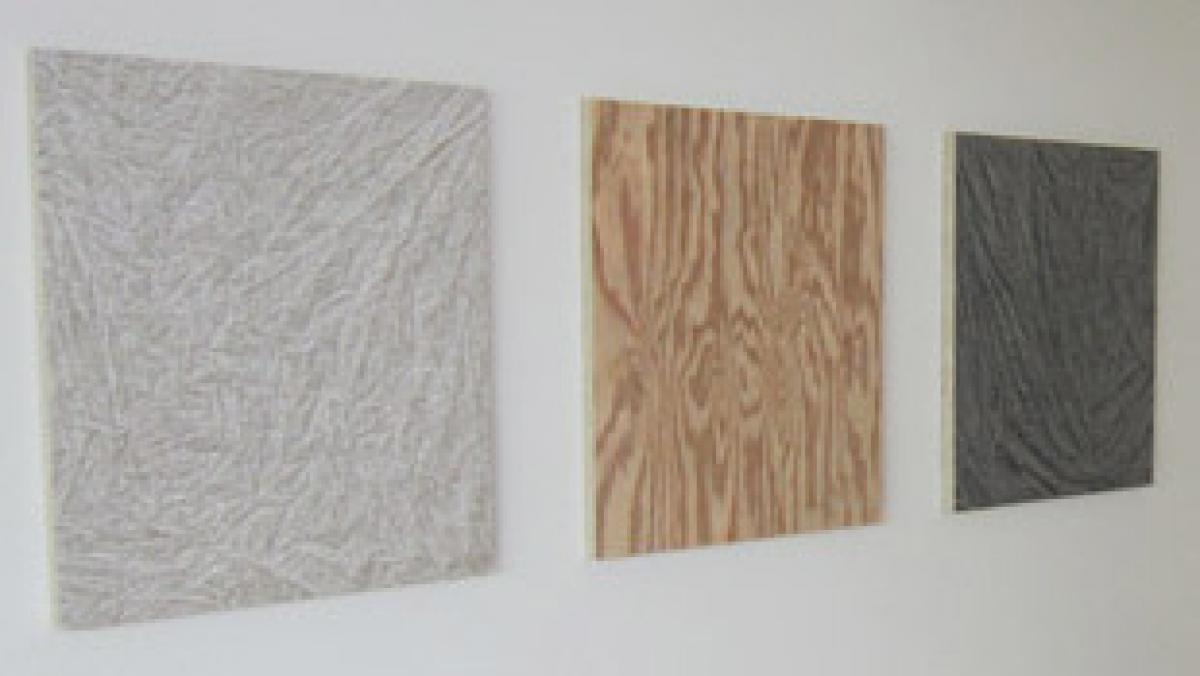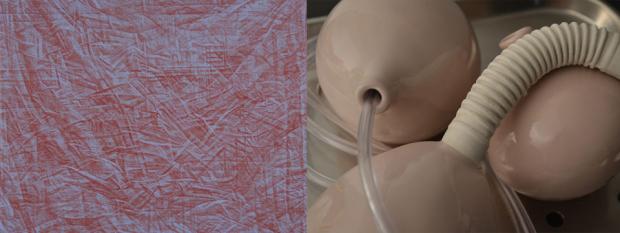Location
The paintings from Kristy Deetz's lyrical, subtle Veil series reweave the trope of draped fabric. Steeped in contemporary philosophy and metaphysics, her work queries the nature of painting itself. In juxtaposition to Deetz's work, former obstetrical and surgical nurse Linda Wervey Vitamvas creates porcelain and steel sculptures that express her fascination with scientific instruments, medical history, and organic form.
Wervey Vitamvas’s work is fueled by her research into the history of medicine. She has spent hours poring over old medical texts, seeking to learn how early doctors and scientists understood the body and the causes of illness. The title of her exhibition, Passionibus Mulierum Curandorum (The Diseases of Women), is also the title of a medieval text traditionally attributed to Trotula, a female physician from the eleventh-century. While recent research has called Trotula’s existence into question, Wervey Vitamvas finds the mystery of her identity and the quality of the book’s language deeply compelling. This exhibition includes a significant group of new work in vitreous china that simultaneously recalls the forms of medical instruments and the body, often with direct reference to the conditions described in Trotula’s text. Displayed on wheeled carts made of steel, these works entwine seductive beauty and a disturbing chill. As a focal point for the installation, Wervey Vitamvas has also created an edition of The Diseases of Women in porcelain and paper, which viewers will be free to peruse for themselves.
Kristy Deetz's Veil Paintings series challenges and plays with expectations of what painting does when it rests "on the crease," as she puts it, between abstraction and representation. Drapery, which is such an important element in Western painting tradition, intrigues Deetz because of its mysterious, transitory quality. Fluid and imprecise in its contours, drapery is both abstract and recognizable. Like drapery, veils create boundaries between the body and the viewer, concealing a subject’s identity while revealing the outlines of form. In a similar way, Deetz’s Veil Paintings reside on the boundary between illusionistic realism and painterly abstraction, the earthly and the spiritual, certainty and mystery. Through visual puns, trompe-l’oeil, and compositional references to Renaissance and Minimalist painting, Deetz’s work offers up dense layers of meaning for the engaged viewer.






